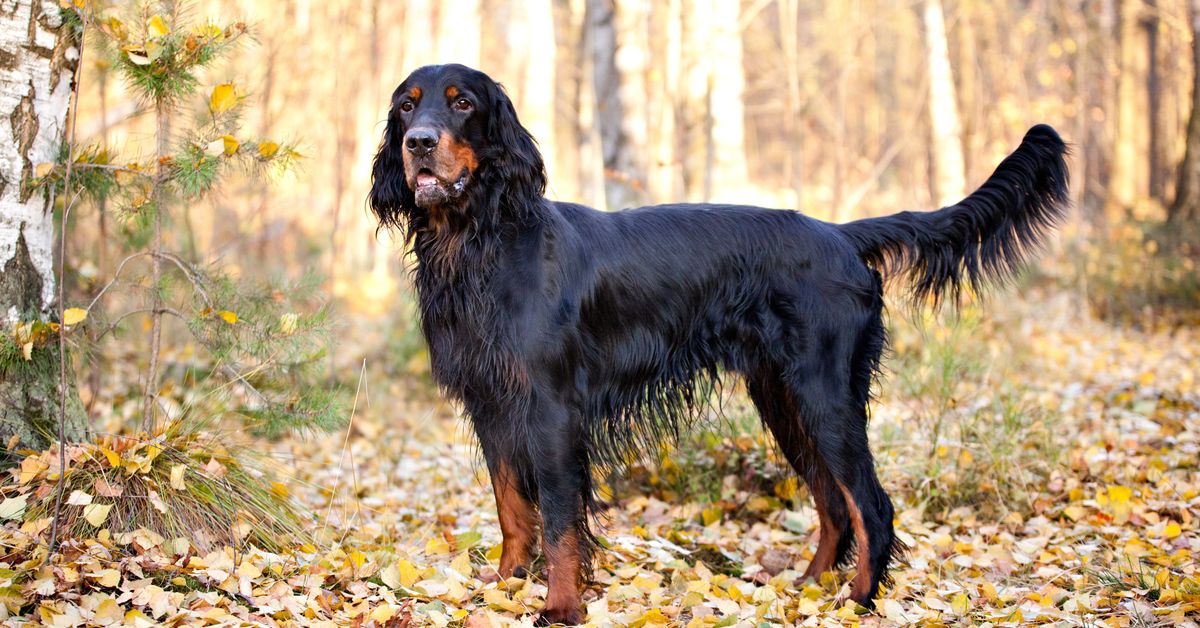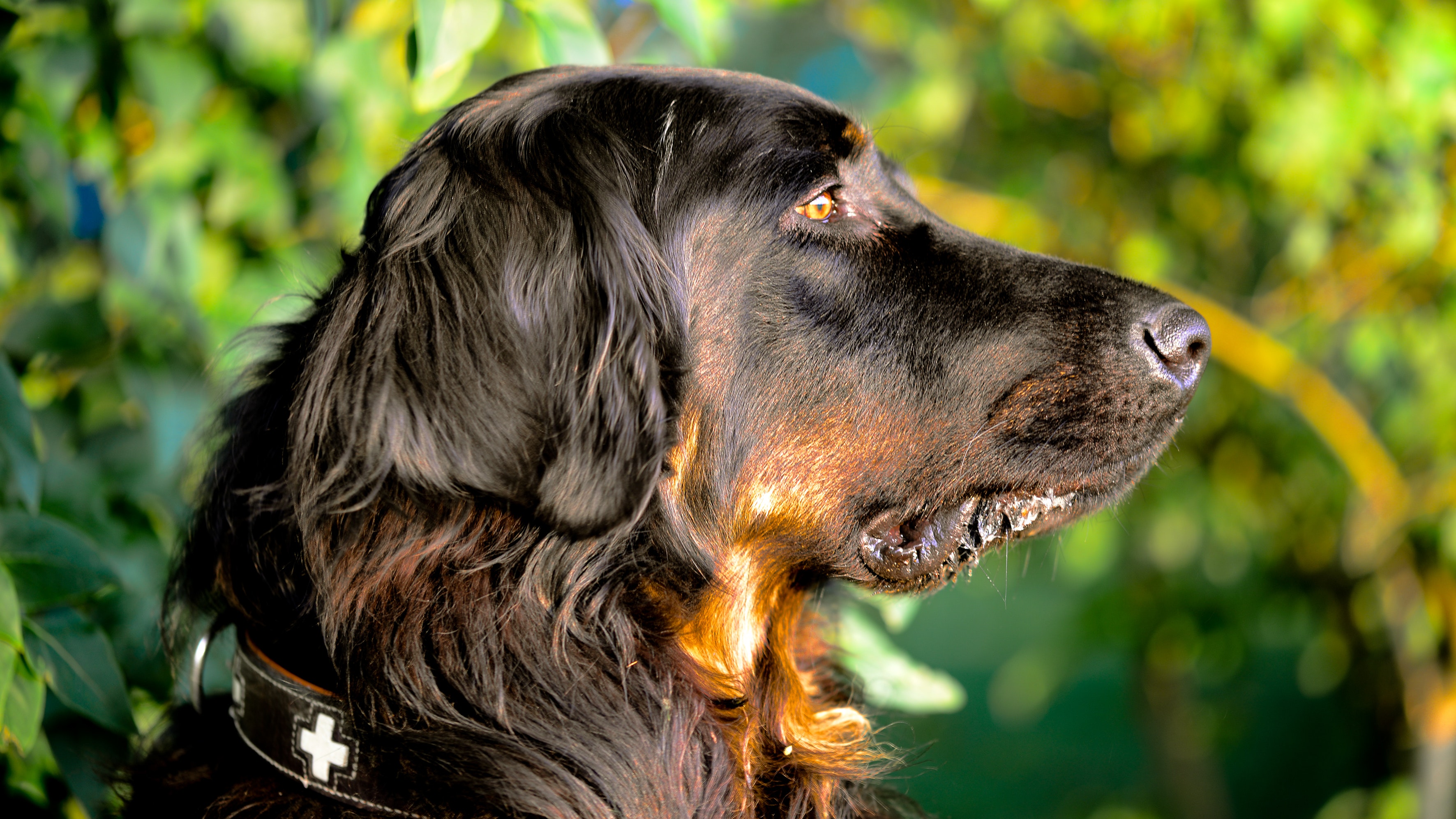
Gordon Setter – Information, History, Characteristics & Health
Gordon Setter, At the first official dog show in Newcastle in 1859, exclusively for Setters and Pointers, a Black and Tan Setter took the First Prize for Setters.

History of Gordon Setter
It is generally agreed that all the setters derive from the Spaniel. The Gordon Setter has long been associated with Gordon Castle in Scotland and is still sometimes referred to as the Scottish Setter,
but there is plenty of evidence that the Black & Tan Setter was in existence in various parts of the UK long before the Duke of Gordon strengthened and perfected the breed in the early part of the 18th century. The Black & Tan Setter is depicted in art as early as 1805.
The original purpose of the breed was to find game birds, especially grouse, by quartering on moorland, and then to freeze on point to indicate to the guns where the game was.
Despite the scarcity of open moorland today, Gordons are still used for this purpose and we have not so far seen the breed split into distinct working and show type, as has happened with many gundogs.
Characteristics of Gordon Setter
The Gordon Setter is a medium-sized dog with striking black and tan markings, and a flat shiny coat of moderate length. They are a slightly heavier build than the other setters.

His owner must never forget that the Gordon is, at heart, a questing dog: all his instincts will urge him to gallop ahead of his master in search of game. He is not a dog to remain at the heel, nor should he be expected to do so.
He requires persistent but always kindly training to bring out his biddable side. However, he does generally want to please and his sensitive nature is such that he never responds well to harsh handling. As a galloping breed, once mature he must have access to free galloping every day; so not a dog for the couch potato.
He is intelligent and very loyal to his master and family and he needs to live in as part of the family; he will not thrive kept outside in a kennel all day.
He can be reserved with strangers but soon accepts them as friends for life.
A dog with a big personality who soon wins the heart. Having once owned a Gordon you will feel that changing breed is not an easy option!
Health of Gordon Setter
Gordon Setters are overall a healthy breed that, with luck, will live to be about 13 years of age.
Like most big breeds, hip dysplasia can be a problem and all breeding stock should be hip scored before mating; the lower the score the better.

Recently late-onset Progressive Retinal Atrophy (PRA) has been discovered in some Gordons. This is an eye condition that does not become apparent until about 8 years of age but may lead to blindness if the dog in question is affected.
Research has been undertaken by the Animal Health Trust to develop a gene test that can be carried out at an early age and which will confirm the PRA status of the dog tested. The breed is delighted to say that a DNA test is now available direct from the AHT where more information can be sort. The PRA in Gordon Setters is termed PRA (rcd4) mutation.
All breeding stock should be DNA tested except where both parents of breeding stock are genetically clear and thus their offspring will be clear. The prospective owner should always ask specific questions about the hip and eye status of parents and grandparents if available and ask to see relevant certificates.
